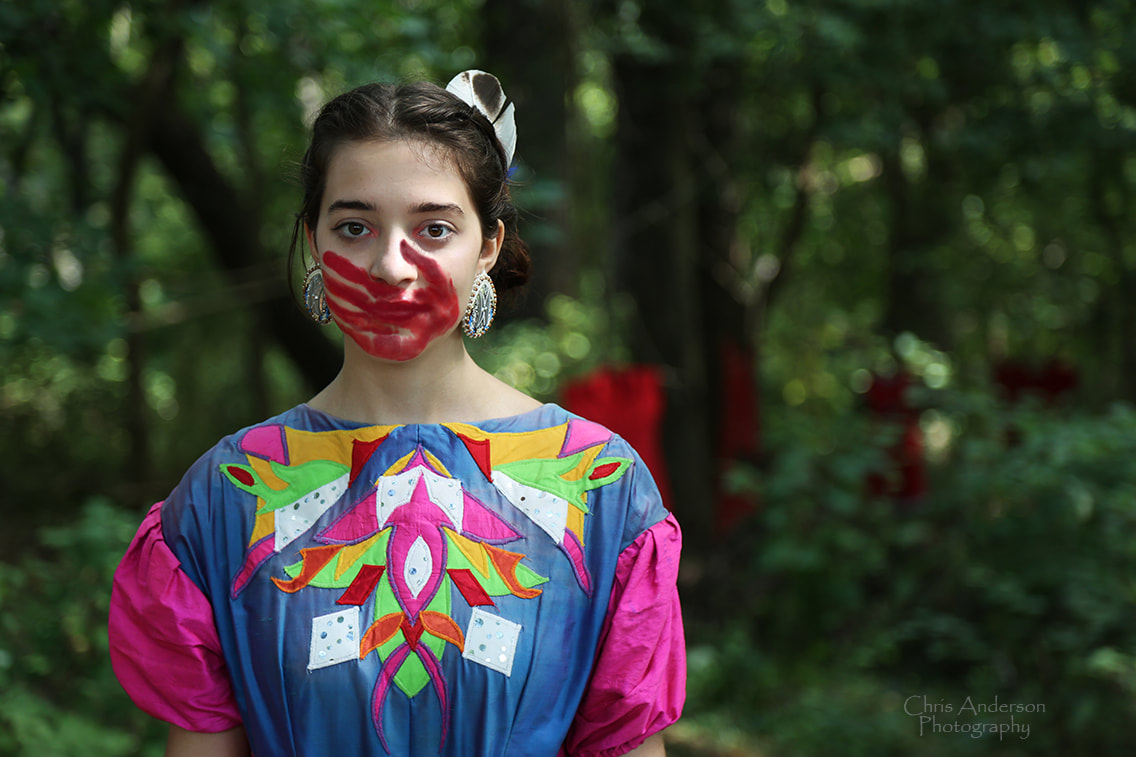Indian Village 2021 - Outdoor Library
The Indian Village was behind the Village Montessori School at Bluemont in a large meadow beside a host of other non-profits, authors and learning activities. There were three main areas for the Indian Village are: Mountain Meadow Place, The Circle and Indigenous Hall.
|
Photo Gallery
Mountain Meadow Place
Food is Medicine Garden
Ancient Healing Practices
Indigenous Regalia
Native American Film and Music
Indigenous Crafts:
Give Away Table.
* Examples of an item(s) on a speaker display table. Table is covered in banana leaves and colorful tablecloth. |
Reading Gallery
Suspended Reading Room for the curious and truth seekers dozens of oversized books, written by Native American Indian (and other) authors, hang from the ceiling. Explore indigenous literature for children, young teens and adults. Read history from our point of view.
Giant Outdoor Book that stands 4’ x 2 ½” feet tall and has real pages that turn. This wooden book is constructed by volunteer David Blair and covered in leather by Chris (Comeswithclouds) White.
Display. Sitting near the entrance, is a small canoe filled with flowers and plants from local residents and loaned flowers and plants from the local Nalls’ Farm Market. Medicine Wheel sits in the center of a roped off space painted red, yellow, black and white by volunteer Lisa Rogers. These four colors are traditional for Native American Medicine Wheels across the United States and represent the four directions and much more. The Tatonka Ceremonial Drum is covered during the event and sits inside the roped off area. During the event, Tatonka is covered to express the idea of keeping things sacred. She represents a mother’s heartbeat. We protect the drum just as we protect our own mother’s heartbeat. Tatonka is on loan from Jeff Wolf at Stillwaters, Marshall, VA. Prayer Ties are available at the foyer for guests who wish to make prayers and tie them around the center circle. Straw bales sit around a circle for people to rest and meditate as we take in the Blue Ridge Mountain fresh air. Giveaway Table offers FREE foods and herbs available for people as they exit the event at the end of the day. Giveaways are symbolic of celebrating the fall harvest. Items include locally grown sunchokes, wild lavender. QR Codes drive guests to a library list of recommended books, music and movies available on www.HarvestGathering.org. Medicine Bag. Typically made of leather, we offer guests a simple medicine bag made of recycled products. The contents of a person’s medicine bag is usually a secret and has a special tie to the wearer. The bag has a spiritual significance to the wearer. We have various things in the Indian Village that guests can add to their medicine bag, sacred cedar and lavender to name a few. Bags are sewn by volunteer Trina Black. Scavenger Hunt to engage children and their parents to visit all aspects of the fair. A stamp pad will be available in the Indian Village for children to find and stamp their booklet (secret location: natural tie-dye area). Prayer Tie Table offers a list of experiences in the Indian Village. Items on the table include (paper) medicine bags that visitors can use to create their own medicine bag as they walk around the Indian Village. Participating exhibits have items guests can add to their medicine bag (i.e., cedar, prayer ties etc.). Loose prayer ties are available for visitors to make prayers for the Earth, for those affected by storms, fires and COVID. Directions are available on the table. Videos playing include:
|
Missing Murdered Indigenous Women and Girls (Children)
Violence Against Native Americans and Alaska Natives far exceed national average
For decades, Native American and Alaska Native communities have struggled with high rates of assault, abduction, and murder of women. Community advocates describe the crisis as a legacy of generations of government policies of forced removal, land seizures and violence inflicted on Native peoples.
A 2016 study by the National Institute of Justice (NIJ) found that more than four in five American Indian and Alaska Native women (84.3 percent) have experienced violence in their lifetime, including 56.1 percent who have experienced sexual violence.
In the year leading up to the study, 39.8 percent of American Indian and Alaska Native women had experienced violence, including 14.4 percent who had experienced sexual violence.
Overall, more than 1.5 million American Indian and Alaska Native women have experienced violence in their lifetime. For more information:
www.bia.gov/service/mmu/missing-and-murdered-indigenous-people-crisis
For decades, Native American and Alaska Native communities have struggled with high rates of assault, abduction, and murder of women. Community advocates describe the crisis as a legacy of generations of government policies of forced removal, land seizures and violence inflicted on Native peoples.
A 2016 study by the National Institute of Justice (NIJ) found that more than four in five American Indian and Alaska Native women (84.3 percent) have experienced violence in their lifetime, including 56.1 percent who have experienced sexual violence.
In the year leading up to the study, 39.8 percent of American Indian and Alaska Native women had experienced violence, including 14.4 percent who had experienced sexual violence.
Overall, more than 1.5 million American Indian and Alaska Native women have experienced violence in their lifetime. For more information:
www.bia.gov/service/mmu/missing-and-murdered-indigenous-people-crisis
